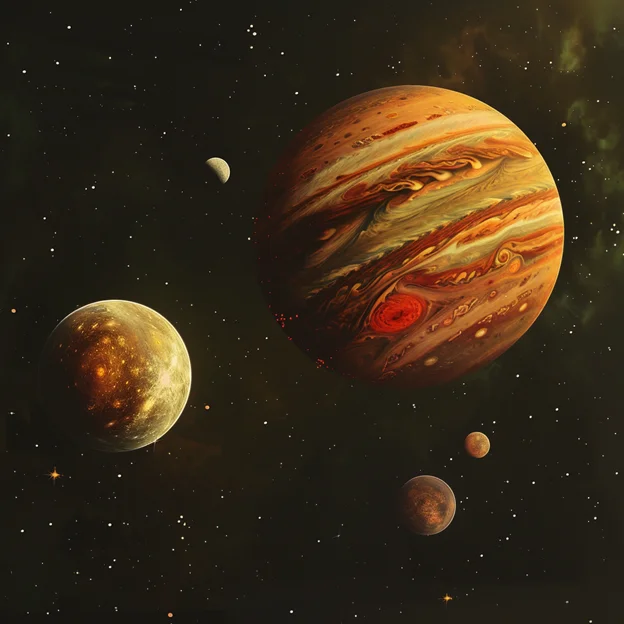When it comes to exploring the solar system, astronomers of the last 400 years have only discovered two major planets that would have been unknown to the ancients: Uranus in 1781 and Neptune in 1846. But that’s not for lack of trying. Hypothetical planets, such as Phaeton, a world said to exist between Mars and Jupiter, or Vulcan, a planet closer to the sun than even Mercury, were once believed to be very real objects. Of course, there are dwarf planets such as Pluto or Eris hiding beyond Neptune, and possibly even an elusive Planet Nine that any astronomers are still hunting today. But with the discovery of the ice Giants and Neptune, as it stands, it seems our solar system is complete; orbiting the Sun are eight major planets. Or are there?
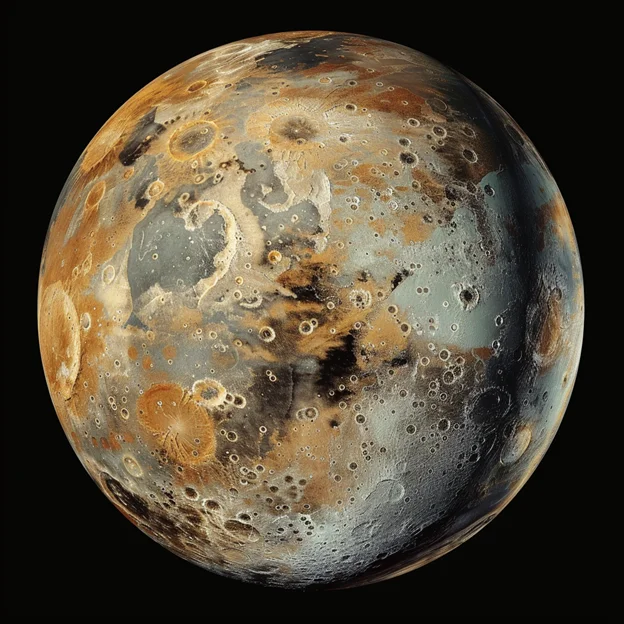
Counter Earth Is the Theory’s Name
Is there a region directly behind the sun that we cannot see? Could there be an unknown planet on the opposite side of our star? Indeed, thousands of years ago, someone proposed this bizarre idea. “Counter Earth” is the theory’s name, and Antichthon is the planet it describes. So could there really be a big planet in the same orbit as Earth, hiding behind the Sun? How did this theory even come about? And if this hypothetical planet did exist, how would it affect the rest of the solar system? The idea that there might be another planet in our solar system in an orbit that keeps it permanently behind the sun dates back at least 2400 years, according to the Greek philosopher Philolaus. He proposed the existence of a “counter-Earth’ called Antichthon.
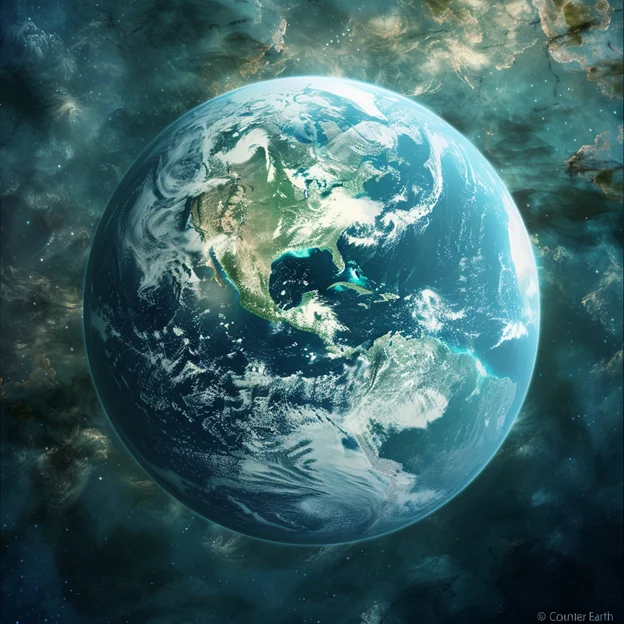
The Believes Of the Philolaus
Philolaus believed that the cosmos operated according to the principles of harmony and balance. At its center was a great fire, around which the Earth and other celestial bodies revolved. In his model, however, there must exist another Earth, opposite to ours, to maintain this cosmic balance. He envisioned Antichthon as a hidden celestial body on the opposite side of the central fire, hidden from human view. This hypothetical counter-Earth played a critical role in maintaining the cosmos’ symmetry and harmony, serving as a cosmic counterpart to our own planet. Of course, our understanding of the solar system is far greater than that of ancient Greece. But the question never-the-less remains: is there an undiscovered planet directly behind the Sun? After all, we cannot see that part of space from our perspective.
Planet Directly Behind the Sun
Although an interesting idea, one that feeds on the imagination of the human mind, if there were an unknown planet directly behind the Sun, we would have seen it by now. We have been sending spacecraft into the solar system for decades, many of them designed to view the sun from different angles. We have never observed a world like this. But what if we simply missed it? Researchers would detect the gravitational influence of a counter-Earth on Earth, other planets, and especially our satellites. They’d notice if something on the other side of the sun was gravitationally tugging at planets like Mercury or Venus, for example. Because of the gravitational effects of each object within the solar system, we can detect large bodies without ever even seeing them.
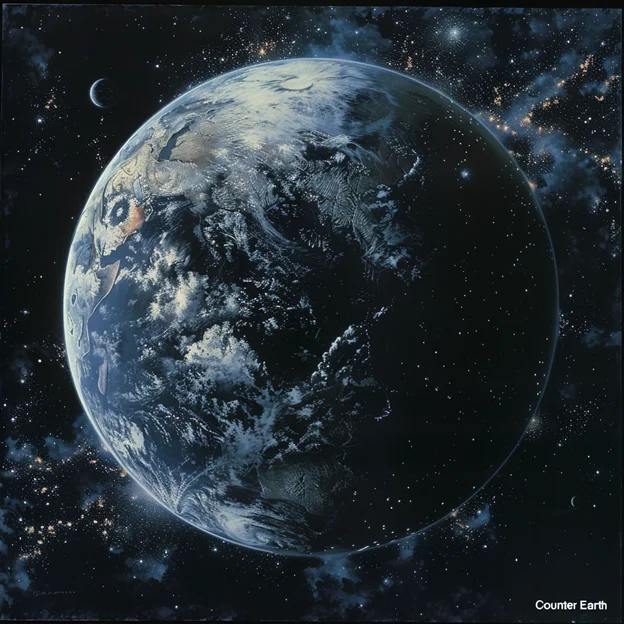
Gravitational Influence
Neptune’s discovery was predicted by its gravitational effects on Uranus. So perhaps a more intriguing question is not whether a counter-Earth does exist, but rather whether it could exist. From a purely theoretical standpoint, the answer is yes; such a planet could exist, hidden from our view on the opposite side of the sun. But, given the abundance of other objects orbiting the sun, its concealment would be fleeting. Ultimately, the solar system encompasses more than just Earth and the Sun; numerous other celestial objects engage in a dynamic cosmic interaction. If, for example, the planet Antichthon suddenly appeared somewhere in this position behind the Sun, it would only stay there for a very brief time. With their gravitational influence, the other planets in the solar system would unsettle their orbits. This would eventually result in the counter-Earth and the Earth catching up with each other, potentially even creating an encounter.
Venus has about 80 Percent of Earth’s Mass
So, a counter-Earth would affect the motions of all nearby objects, allowing us to detect it, but the reverse is also true: those nearby objects would also affect the counter-Earth. Venus, for example, approaches Earth as close as 40 million kilometers (25 million miles) every 584 days. It makes sense that Venus would also approach the counter-Earth in a similar manner. Venus has about 80 percent of Earth’s mass, so after even a few dozen passes, Venus’ gravitational influence would move the hidden world to a position where we could view it directly. All the while, Mercury, Mars, and even Jupiter would be adding to that influence. However, there are positions within our planet’s orbit that are known to be stable, called Lagrange points. This hypothetical planet is believed to exist on the opposite side of the sun, where one of the Lagrange points lies. Lagrange points are locations in our solar system where the gravitational pull of any two planetary bodies, as well as the motion of their orbit, combine to create equilibrium.
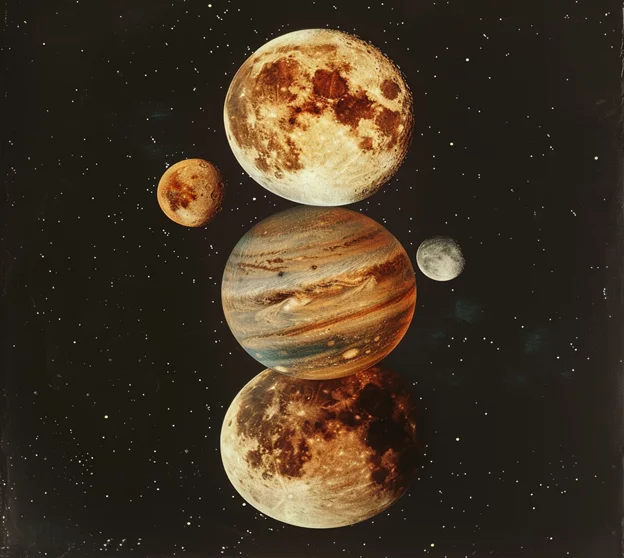
The Sun at Earth’s Lagrange Point
These are points in space that are gravitationally stable. When we send objects to these locations, they either naturally stay there or can maintain their position with minimal energy due to the balance of forces. NASA has taken advantage of these Lagrange points, most famously with the James Webb Space Telescope, which orbits the Sun at Earth’s Lagrange Point number two. This enables the telescope to maintain alignment with Earth during its orbit around the sun while consuming minimal fuel. There are even small, naturally forming objects orbiting within these points, called Earth’s Trojans. Researchers have only discovered two Earth Trojans, both situated within Lagrange Point 4. So what about the Earth-Sun Lagrange point 3? This point is situated on the opposite side of Earth’s orbit. Could there be a hidden object?
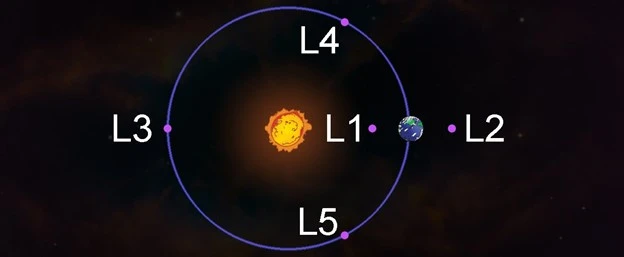
While Lagrange points 4 and 5 are known to be stable, Lagrange points 1, 2, and 3 are not. An object located at one of these points would, after some time, drift away once again due to the gravitational influence of the other planets. You can think of it as being “meta stable,” like a ball sitting on a hill; a little push or bump and it will start to roll away. So, we know for sure that there is no undiscovered planet lurking on the other side of the sun. Although it is an intriguing concept, it is best reserved for the realms of science. Nevertheless, the counter-Earth theory, initially conceived thousands of years ago, presented some intriguing concepts that undoubtedly shaped the minds of later thinkers, laying the foundation for discussions about the nature of the universe.
Regards
Dr. Abid Hussain Nawaz
You Might Also Like

